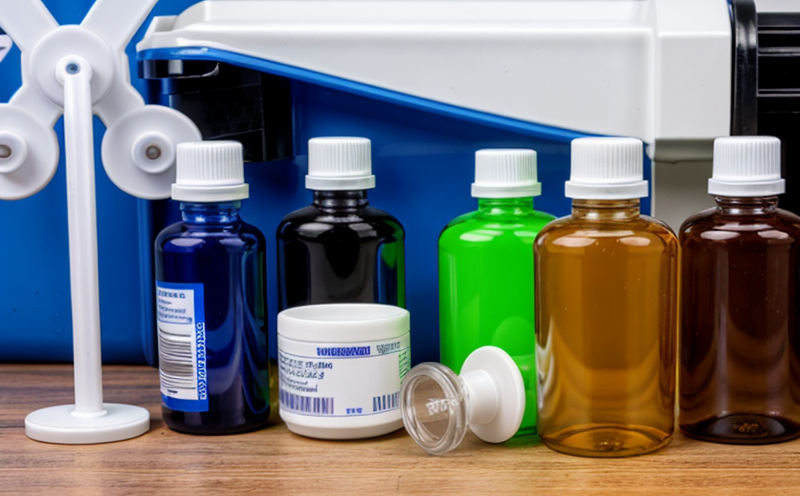EN 16227 Radioactive Isotopes in Healthcare Waste
The European Standard EN 16227:2015 provides a harmonized method for determining the presence and concentration of radioactive isotopes in healthcare waste, particularly those used or produced during medical and pharmaceutical procedures. This service is essential for ensuring regulatory compliance with international standards and safeguarding public health and the environment.
Healthcare waste can include a wide range of materials such as sharps (needles, syringes), blood products, and discarded medical devices. Many of these items may contain radioactive isotopes used in diagnostic or therapeutic procedures. The presence of radioactivity presents unique challenges for disposal and management, necessitating accurate detection methods.
EN 16227 outlines a procedure that involves the collection, preparation, and analysis of healthcare waste samples using gamma spectrometry. This method allows for the precise identification and quantification of radioactive isotopes present in the waste stream. The standard specifies detailed procedures for sample handling to minimize worker exposure and ensure accurate results.
The test parameters include the detection limits for various isotopes commonly used in medical applications, such as technetium-99m (Tc-99m), iodine-131 (I-131), and cesium-137 (Cs-137). These isotopes are frequently employed in diagnostic imaging and radiotherapy. The standard also covers the acceptable levels of contamination that healthcare facilities must adhere to, ensuring compliance with national regulations.
Specimen preparation is a critical step in this testing process. Samples are collected from various waste streams within medical facilities, including sharps containers, liquid effluents, and solid waste. Each sample undergoes thorough analysis to ensure accurate results. The standard provides detailed protocols for the collection, labeling, and transport of samples to prevent contamination.
The instrumentation used in this process includes gamma spectrometers capable of detecting low levels of radioactivity. These instruments are calibrated according to international standards (ISO 19253) to ensure consistent and reliable results. The testing procedure involves measuring the gamma-ray energy spectrum emitted by the radioactive isotopes present in the sample.
The reporting process for EN 16227 is comprehensive, detailing the types of waste examined, the detected isotopes, their concentrations, and compliance with regulatory limits. Reports are provided in a standardized format to facilitate easy interpretation by quality managers and compliance officers. Compliance with this standard ensures that healthcare facilities meet legal requirements set forth by national and international bodies.
The importance of this test cannot be overstated, especially in light of growing concerns over environmental contamination from improperly managed radioactive waste. By adhering to EN 16227, medical and pharmaceutical companies can ensure the safe disposal of hazardous materials, protect public health, and contribute to sustainable waste management practices.
Accurate testing is crucial for healthcare facilities to maintain compliance with stringent regulations governing radioactive waste. The standard helps in identifying potential sources of contamination early on, allowing for corrective actions to be taken promptly. This proactive approach not only ensures regulatory adherence but also enhances the overall safety and reliability of medical and pharmaceutical operations.
In summary, EN 16227 is a vital tool for healthcare facilities seeking to manage radioactive waste responsibly. By providing precise methods for detecting and quantifying isotopes in healthcare waste, this standard supports compliance with international standards and promotes best practices in waste management.
Why Choose This Test
Selecting the appropriate testing method is crucial when dealing with radioactive isotopes in healthcare waste. The EN 16227 test offers several advantages over other methods, making it an ideal choice for quality managers and compliance officers:
- Precision Measurement: Gamma spectrometry allows for highly accurate detection of low-level radioactivity.
- Compliance Assurance: Adherence to this standard ensures that facilities meet regulatory requirements set by national and international bodies.
- Environmental Protection: Proper identification and disposal of radioactive waste help prevent environmental contamination.
- Worker Safety: Standardized procedures minimize the risk of exposure for personnel handling samples.
The use of EN 16227 also enhances reputation among stakeholders, including patients, regulatory bodies, and investors. Compliance with this standard demonstrates a commitment to responsible waste management practices, which is increasingly important in today’s environmentally conscious world.
Furthermore, the test results provide valuable data that can be used to optimize waste management processes within healthcare facilities. By identifying areas of high contamination, facilities can implement targeted measures to reduce waste and minimize environmental impact.
Customer Impact and Satisfaction
Implementing EN 16227 in healthcare waste management has numerous positive impacts on customers, including quality managers, compliance officers, and R&D engineers. Here are some key benefits:
- Enhanced Compliance: Facilities can ensure they meet all relevant regulatory requirements.
- Risk Mitigation: Early detection of contamination helps prevent potential hazards.
- Improved Reputation: Demonstrating adherence to international standards boosts customer confidence and trust.
- Sustainable Practices: Responsible waste management contributes to a more sustainable healthcare environment.
The test also supports continuous improvement within facilities by providing actionable insights into waste processes. This information can be used to refine procedures, reduce costs, and enhance overall efficiency. Ultimately, the implementation of EN 16227 leads to greater customer satisfaction through reliable and transparent reporting practices.
Use Cases and Application Examples
| Use Case | Description |
|---|---|
| Diagnostics | Testing waste from diagnostic imaging procedures to ensure compliance with radiation safety standards. |
| Treatment | Analyzing waste from radiotherapy treatments to verify the absence of radioactive contamination. |
| Disposal | Evaluating waste destined for disposal sites to confirm it meets regulatory requirements for radioactive material. |
| Research and Development | Monitoring new medical devices or procedures that involve radioisotopes to ensure safety and efficacy. |
| Training | Providing training materials and scenarios based on real test results for staff education and proficiency. |
| Environmental Monitoring | Sampling waste streams to assess potential environmental impacts of radioactive isotopes. |
| Facility Audit | Conducting audits of healthcare facilities to ensure they are in compliance with EN 16227 standards. |
The use cases highlighted above underscore the versatility and importance of this testing method across various aspects of medical and pharmaceutical operations. By applying EN 16227, facilities can effectively manage radioactive waste, ensuring both regulatory compliance and environmental sustainability.





